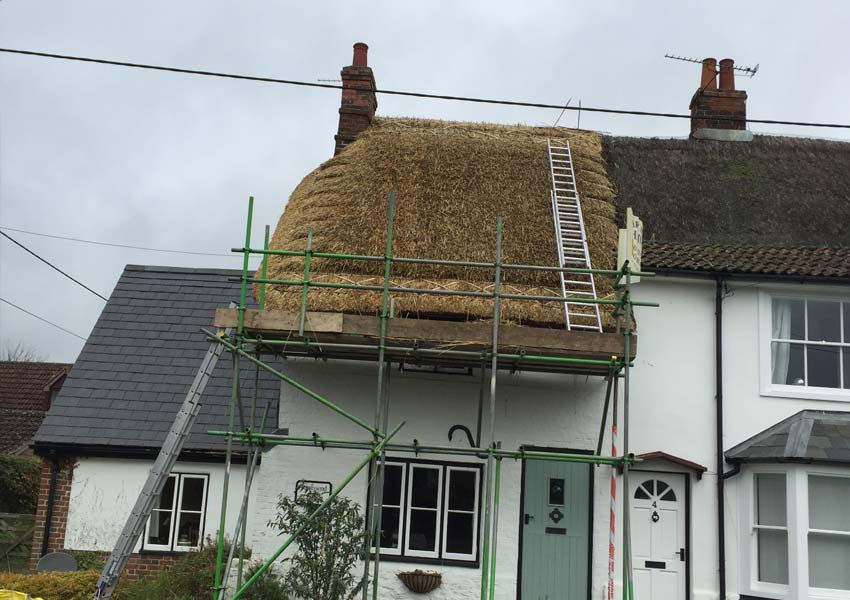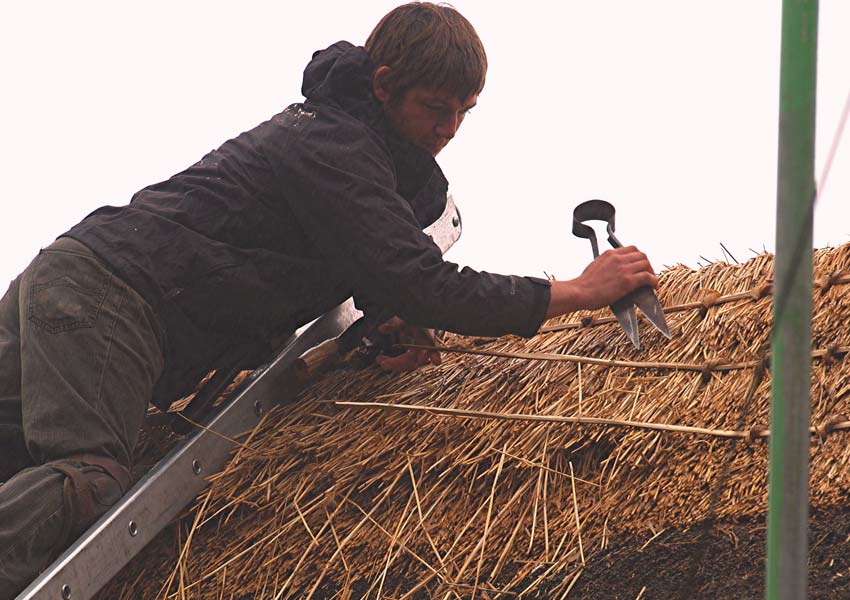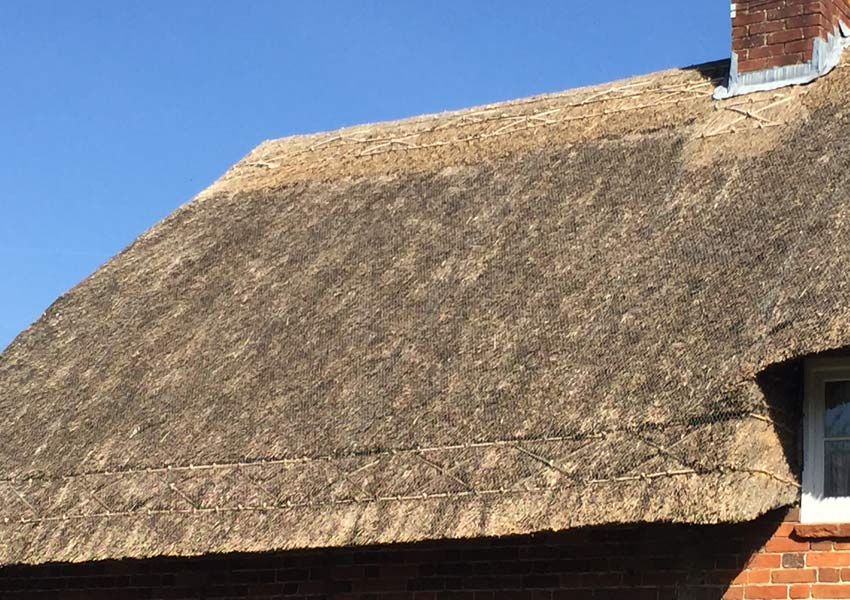
Thatching Process
The thatching process that I use to ensure the highest quality results for
your property, whilst also minimising disruption to you and your neighbours
SETUP AND COMPLETION
On most jobs, I employ a reputable, professional scaffolder. Whilst the idea of a scaffold surrounding your property may be daunting, it will give me a safe platform to work from. The scaffold also prevents the possible damage that could potentially be caused to your garden from constant readjustments of ladders..
Your property will of course be left clean and tidy when the job is finished and the scaffold taken down, although please note there will be small amounts of loose straw around until the final clear up on completion.
I always take great care of pots, plants, patios, decking and your garden in general.


WORKING PRACTICES
Once I begin a job I aim to be on site every day until completion. Where there may be some exceptions to this – for example during the harvest season – I will discuss with you before starting the job. I generally start work at 8.00 am, and will usually be on site by 8.30 am, working through to approximately at 4.30pm (or later on some days). This will obviously vary some days, as I may need to either unload all the loose straw, or load and deliver materials for the job.
I harvest my own wheat crop for thatching, locally, and still use the tried and trusted method of cutting and binding the specially grown straw, stooking the sheaves, and then threshing in the traditional manner. The bundles of straw are then ready for your roof.
I am exceptionally proud of my reputation locally – which I have taken great care in building up over many years. I am confident in guaranteeing a first class job, regardless of your requirements.
TYPES OF THATCH
Long Straw – Whilst this is actually no longer than straw that is combed out, the term comes from the fact you can see lengths of straw down the roof with both heads and butts showing. When on the roof it has a more ragged look and will have rows of spars forming a pattern at the bottom as well as the top. Life for a roof of this type should be around twenty years. However, part way through its life a re-ridge and re-wire should be applied, helping to prolong its life.
Combed Wheat Reed – This is applied with all the butts facing down the roof so you only see the tips and it has a much neater look. It also has no spar pattern at the bottom. Life for a roof should be around 20 – 30 years, and as with long straw, a re-ridge and re-wire part way through its life should be applied helping to prolong its life.
Ridge Types – Plain wrap over ridges are traditional in Wiltshire, whilst the block ridge, either plain or with pattern, originates from mainly Water Reed areas. The disadvantage with a block ridge on a straw roof however is it creates a drip which wears away the straw below it.

MY POINT BY POINT PROCESS
- Firstly I will organises set up scaffolding or ladders safely as per initial agreement and safety guidelines.
- I will then remove existing netting as needed, fold up and dispose of responsibly
- Following this I’ll remove existing thatch as required for the specific job before collecting into bags.
- I will then fix eaves to roof, and overhang the existing enough so a proper cut can be made.
- Packing should be used where needed, to ensure correct angles and firmness.
- The distance a course of material travels up the roof should be small enough to secure the previous course again.
- Packing should be used at ridge or top course level to ensure the correct pitch and firmness.
- I will check the coat work is smooth and level where possible.
- The ridge will be packed when working if it appears soft in areas when sparring down
- I will also ensure the ridge will be of a neat and sharp appearance if a block pattern is cut.
- The area between turnover rows of spars and top row will be of a level and not lumpy appearance.
- All coat-work to be trimmed or brushed and all course marks and dents to be removed.
- I will ensure constant checking from the ground, as this is required for all the above actions.
- All eaves will be trimmed and cut to leave a sharp neat finish, there is to be no dents or wobbly bull-nosed area
- All area and ridges under chimneys will be packed and made firm.
- I will check and report on all brickwork under thatch level that is exposed when working
- I will ensure all flashings around chimneys will be functional, neat and tidy.
- Wire netting will be hung on roof with small overlap and of a straight appearance from the ground
- All bubbles will then be removed from netting, without over stretching wire.
- Wire to be folded around eaves very neatly, not pinched or pulled up through and then be fixed under eaves before thatching onto flat roofs.
- Finally, I will take great care to leave your property tidy – both when working and undertake a spot clean at the end of job.
